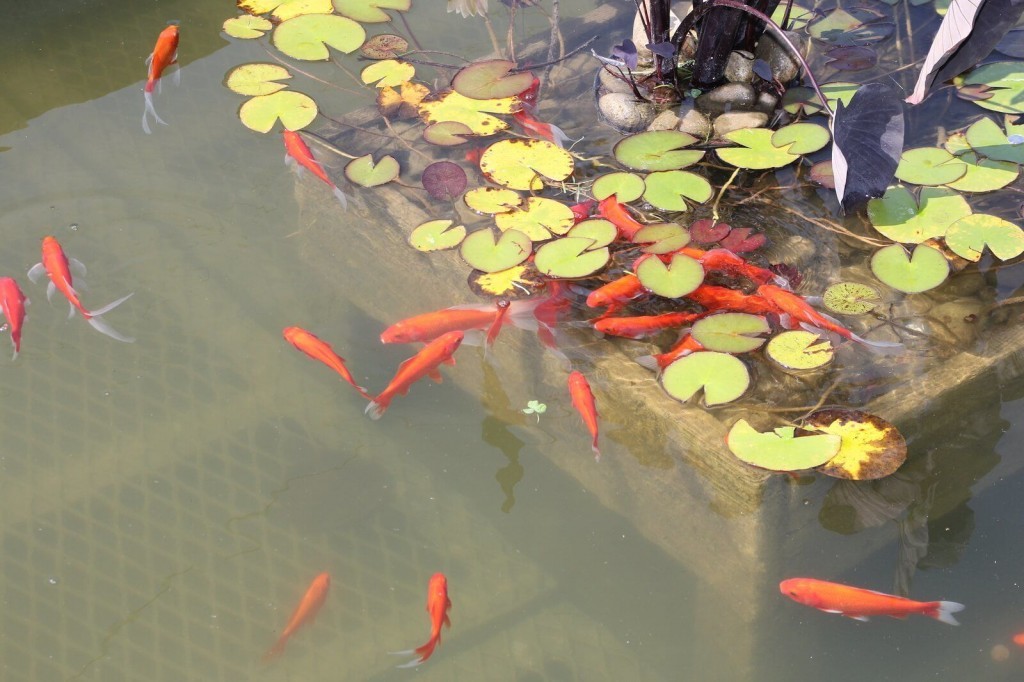
Taking Care of Goldfish in a Pond
Goldfish
can grow 10 inches or longer, so they require lots of space. A pond
provides goldfish with a large, natural environment that has plenty of
exposure to natural sunlight. Even the ideal enclosure of a real pond
requires upkeep, though; there are several things you must do to ensure
proper care for your fish.
All types of aeration devices for water & wastewater treatment
Basic Pond Setup
Goldfish require about 20 gallons of water per fish. While a pond can never be too large, it can easily be too small if you have several very large goldfish. The fish should be able to easily swim in the pond without bumping into one another or into pond ornaments. Because goldfish are cold-water fish, they generally should be in a pond that is shaded. If you live in a very cool area, however, direct sunlight may help maintain pond temperatures. Goldfish do not need substrate, but substrate can add to the pond's appearance and provide a good location to plant pond plants. River rocks are ideal, and many pet stores sell them. Rinse the substrate with hot water before putting it in your tank, and avoid using substrate you found or that you purchased somewhere other than a pet store, as it may not be clean or suitable for fish.Pond Maintenance
A pond filter will ensure that your water remains clean and free of potentially dangerous bacteria. Filters are usually marketed according to tank size, so determine the size of your pond in gallons and choose a filter accordingly. You may need to regularly remove debris from the pond even if you have a capable filter. Ponds tend to establish their own ecosystems over time, but for the first year or so you should drain 10 percent of the water and replace it every week. Add dechlorinator to any tap water you add to the pond, and regularly check the water's pH. Goldfish prefer pH levels to be slightly above 7, usually around 7.4.Temperature
Goldfish are cold-water fish that thrive at temperatures between 62 and 70 degrees Fahrenheit. In the hot summer months, you may need to provide a habitat for your fish indoors. Check the water temperature regularly and provide your fish with ample shade. Goldfish hibernate when water temperatures drop, but if the pond freezes over, they can die from insufficient oxygen. Provide your fish with an air stone and feed them plenty of food in the months leading up to winter. This ensures they have sufficient fat stores to survive hibernation.Feeding
Goldfish are omnivorous scavengers that will eat a wide variety of foods. Brine shrimp, mosquito larvae and bloodworm are ideal sources of protein. Give your goldfish fruits such as chopped grapes and blueberries, and vegetables such as mustard and collard greens. While fish can subsist on fish flakes, they thrive on a varied diet.Pond Mates
Unless fish are very large, keeping them with other animals -- especially turtles -- is a risky proposition because they may be eaten. Goldfish also tend to require cooler temperatures than most tropical fish such as guppies. When introducing a new goldfish to the pond, carefully monitor the fish to ensure there is no fighting. Avoid introducing fish that are substantially smaller or larger than other fish in the pond.The Nitrogen Cycle of a Pond
Of all ingredients in Earth’s atmosphere, nitrogen makes up about 79 percent of it. You will also find nitrogen in the DNA, RNA and proteins, the building blocks of life, in all living organisms; which makes the nitrogen cycle a requirement for sustaining any life on Earth.In layman terms: your goldfish eats an aquatic plant and breaks down the plant’s proteins; the goldfish’s waste contains ammonia (NH3) gets absorbed into the soil, where aerobic bacteria convert it into nitrite (NO2) and then into nitrate (NO3); the aquatic plants in your goldfish pond absorb the nitrates as food and help the aquatic plant grow; your goldfish again eats the plant and the nitrogen cycle continues.
It’s these beneficial bacteria that act as a filter and happen naturally that you want to have in your goldfish pond. Without them, ammonia levels in the water will build and if they reach .025mg/liter it will potentially kill your goldfish. This is more common In a new goldfish pond that doesn’t have establish beneficial bacteria yet so it’s important test the levels of ammonia, nitrites and nitrates.
- See more at: http://www.caringpets.org/how-to-take-care-of-a-goldfish/pond-water-quality/#sthash.PGScLy9y.dpuf
The
Nitrogen Cycle of a Pond
Of all ingredients in Earth’s
atmosphere, nitrogen makes up about 79 percent of it. You will also find
nitrogen in the DNA, RNA and proteins, the building blocks of life, in all
living organisms; which makes the nitrogen cycle a requirement for sustaining
any life on Earth.
In layman terms: your goldfish eats
an aquatic plant and breaks down the plant’s proteins; the goldfish’s waste
contains ammonia (NH3) gets absorbed into the soil, where aerobic bacteria
convert it into nitrite (NO2) and then into nitrate (NO3); the aquatic plants
in your goldfish pond absorb the nitrates as food and help the aquatic plant
grow; your goldfish again eats the plant and the nitrogen cycle continues.
It’s these beneficial bacteria that
act as a filter and happen naturally that you want to have in your goldfish
pond. Without them, ammonia levels in the water will build and if they reach
.025mg/liter it will potentially kill your goldfish. This is more common In a
new goldfish pond that doesn’t have establish beneficial bacteria yet so it’s
important test the levels of ammonia, nitrites and nitrates.
Avoid Overstocking
The number one cause for high levels of ammonia in your pond is overstocking. The more goldfish you put in your pond, the more ammonia that will build up. A goldfish excretes ammonia in two ways: 25% of it is through waste vented and the other 75% is through osmosis through the gills. If the water contains higher levels of ammonia than the goldfish, the goldfish will not excrete it and will eventually die from ammonia poisoning.- See more at: http://www.caringpets.org/how-to-take-care-of-a-goldfish/pond-water-quality/#sthash.PGScLy9y.dpuf
Avoid Overstocking
The number one cause for high levels of ammonia in your pond is overstocking. The more goldfish you put in your pond, the more ammonia that will build up. A goldfish excretes ammonia in two ways: 25% of it is through waste vented and the other 75% is through osmosis through the gills. If the water contains higher levels of ammonia than the goldfish, the goldfish will not excrete it and will eventually die from ammonia poisoning.Remember that one goldfish needs approximately 10-20 gallons. Don’t buy all your goldfish at once; buy them slowly over time so you can more easily adjust your goldfish pond’s nitrogen cycle.
Adding Aquatic Plants
Aquatic plants are a vital component of the nitrogen cycle These live
aquatic plants help control the levels of nitrates by using them up as
plant food. If the ammonia levels in your goldfish pond are constantly
too high try adding a few more plants.
Rotting plant material is also a source of your goldfish pond’s bioload, the biological material that adds to the water pollution of a pond. One of those pollutants is ammonia. If your ammonia test kit shows elevated levels of ammonia, try removing any rotting aquatic plant debris from your pond.
Rotting plant material is also a source of your goldfish pond’s bioload, the biological material that adds to the water pollution of a pond. One of those pollutants is ammonia. If your ammonia test kit shows elevated levels of ammonia, try removing any rotting aquatic plant debris from your pond.
Adding Aquatic Plants
Aquatic plants are a vital component of the nitrogen cycle These live aquatic plants help control the levels of nitrates by using them up as plant food. If the ammonia levels in your goldfish pond are constantly too high try adding a few more plants.
Rotting plant material is also a source of your goldfish pond’s bioload, the biological material that adds to the water pollution of a pond. One of those pollutants is ammonia. If your ammonia test kit shows elevated levels of ammonia, try removing any rotting aquatic plant debris from your pond.
Perform a Water Change
Regular water changes of your pond water will help reduce ammonia levels. Fresh clean water is one of the best things you can give your goldfish. It is recommend to do a 20% water change every one to two weeks for an established tank. For your goldfish pond, do a 10% to 20% when your test kit shows elevated ammonia levels. Sometimes your goldfish pond will require a full water change in order to do seasonal maintenance when your aquatic plants out grow the size of your pond.Add Pond Filtration
If you can, set up a mechanical filtration system in your goldfish pond. A mechanical filter can contribute to the health of your pond in many ways. The most noticeable is that a filter sucks up goldfish waste and rotting plant material; both of which contribute to the bioload of a pond and the increasing levels of ammonia.With a mechanical filter, you can also benefit from having less frequent water changes. Less frequent being the keyword, since nothing can beat a water change, that doesn’t mean that you can simply add a filter and your maintenance requirements are over. You will need to perform regular cleanings of the goldfish pond’s filter; which should be easier than a water change. It’s easy to believe your pond is clean if you can’t visibly see any waste or decomposing plants in your pond, but that just means two things: One, your filter is working and two, all that bioload is in the filter which until removed will continue to add to your goldfish pond’s ammonia levels.
Low Oxygen Levels in a Goldfish Pond
Over stocking goldfish in your pond will lower the levels of
dissolved oxygen in it. Over stocking goes hand in hand with having more food
and waste in your goldfish pond’s water. These decomposing pollutants will use
up valuable oxygen in the water. Remember the rule for stocking your goldfish
pond; 10-20 gallons of water are needed per goldfish.
During the summer months or in periods of hot weather are when most goldfish
pond keepers struggle with low oxygen levels in their pond. The combination of
high temperatures and low water circulation are the main causes of lower than
normal oxygen levels in your goldfish pond. This in turn can lead to very low
levels of gas exchange (oxygen and carbon dioxide) and if measures are not
taken, can lead to the death of your goldfish.Low oxygen levels in your goldfish pond can be caused by the aquatic plants you have living in it. Aquatic plants produce oxygen during the day but will then compete with your goldfish at night for the available oxygen in the pond’s water. This also goes for algae blooms, blanketweed, lilly pads and even green water. If the surface of your goldfish pond become over run with these floating plants like duck weed, frogbit or lilly pads, the surface area at which gasses can be exchanged is reduced, also contributing to lower oxygen levels in the water. These additional living inhabitants that compete for oxygen and reduce the surface area of your pond is most likely the cause for any goldfish loss overnight.
The symptoms
Along with goldfish loss, your goldfish will become less active, listless and you might even see them near the surface the surface gasping for air. You might even smell a foul odor coming from your goldfish pond.Raise oxygen levels
To keep your goldfish happy and oxygenated you should remove unwanted aquatic plants or algae blooms, creating more surface area and maximizing the exchange of gasses. You will also want to remove any decaying organic material from the bottom or floating free in the pond. If your goldfish pond has a waterfall or fountain you should run them over night during hot weather. These water features will help maintain oxygen levels at night when your aquatic plants using them up. Finally, if you don’t have one already, add a pond air pump that uses air stones to release small air bubbles into your goldfish pond and run it 24/7.Maintain the pH Balance in Your Goldfish Pond
What is pH?
H2O splits into two parts: a positively charged hydrogen, H+ and the negatively charged hydroxyl, OH-; pH is the measurement of hydrogen ions available in the water. The term ph literally means “power of hydrogen”.pH Scale
pH is based on a scale from 1-14; one being the most acidic and 14 being the most alkaline. The pH scale is logarithmic which means that for example, a pH of 8 is ten time more alkaline than a pH of seven. A pH level of 7 is neutral and in most cases, most tap water is close to that range, plus or minus .5 pH. Rain water in your tap water system can be the cause of a lower than 7 pH reading and an elevated reading can be the cause of chemically altered water by municipalities in hard water zones.Your goldfish will thrive in waters with a pH of 7-8.5, neutral to slightly alkaline.
pH Test
You can buy an inexpensive pH test kit at your local pet store. There are a few options when selecting pH test kits: strips, drops or tablets. All of them will give you close to the same readings; the tablets and drops being the more accurate methods but taking a few more minutes to get a reading. There are no real tricks or difficulties in testing your goldfish aquarium’s pH, just read the easy to follow direction on the box of your pH testing kit.Low Oxygen Levels in a Goldfish Pond
Over stocking goldfish in your pond will lower the levels of dissolved
oxygen in it. Over stocking goes hand in hand with having more food and
waste in your goldfish pond’s water. These decomposing pollutants will
use up valuable oxygen in the water. Remember the rule for stocking your
goldfish pond; 10-20 gallons of water are needed per goldfish.
During the summer months or in periods of hot weather are when most
goldfish pond keepers struggle with low oxygen levels in their pond. The
combination of high temperatures and low water circulation are the main
causes of lower than normal oxygen levels in your goldfish pond. This
in turn can lead to very low levels of gas exchange (oxygen and carbon
dioxide) and if measures are not taken, can lead to the death of your
goldfish.
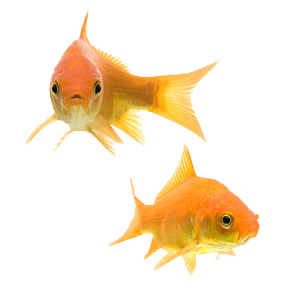
Low oxygen levels in your goldfish pond can be caused by the aquatic plants you have living in it. Aquatic plants produce oxygen during the day but will then compete with your goldfish at night for the available oxygen in the pond’s water. This also goes for algae blooms, blanketweed, lilly pads and even green water. If the surface of your goldfish pond become over run with these floating plants like duck weed, frogbit or lilly pads, the surface area at which gasses can be exchanged is reduced, also contributing to lower oxygen levels in the water. These additional living inhabitants that compete for oxygen and reduce the surface area of your pond is most likely the cause for any goldfish loss overnight.

Low oxygen levels in your goldfish pond can be caused by the aquatic plants you have living in it. Aquatic plants produce oxygen during the day but will then compete with your goldfish at night for the available oxygen in the pond’s water. This also goes for algae blooms, blanketweed, lilly pads and even green water. If the surface of your goldfish pond become over run with these floating plants like duck weed, frogbit or lilly pads, the surface area at which gasses can be exchanged is reduced, also contributing to lower oxygen levels in the water. These additional living inhabitants that compete for oxygen and reduce the surface area of your pond is most likely the cause for any goldfish loss overnight.
The symptoms
Along with goldfish loss, your goldfish will become less active, listless and you might even see them near the surface the surface gasping for air. You might even smell a foul odor coming from your goldfish pond.Raise oxygen levels
To keep your goldfish happy and oxygenated you should remove unwanted aquatic plants or algae blooms, creating more surface area and maximizing the exchange of gasses. You will also want to remove any decaying organic material from the bottom or floating free in the pond. If your goldfish pond has a waterfall or fountain you should run them over night during hot weather. These water features will help maintain oxygen levels at night when your aquatic plants using them up. Finally, if you don’t have one already, add a pond air pump that uses air stones to release small air bubbles into your goldfish pond and run it 24/7.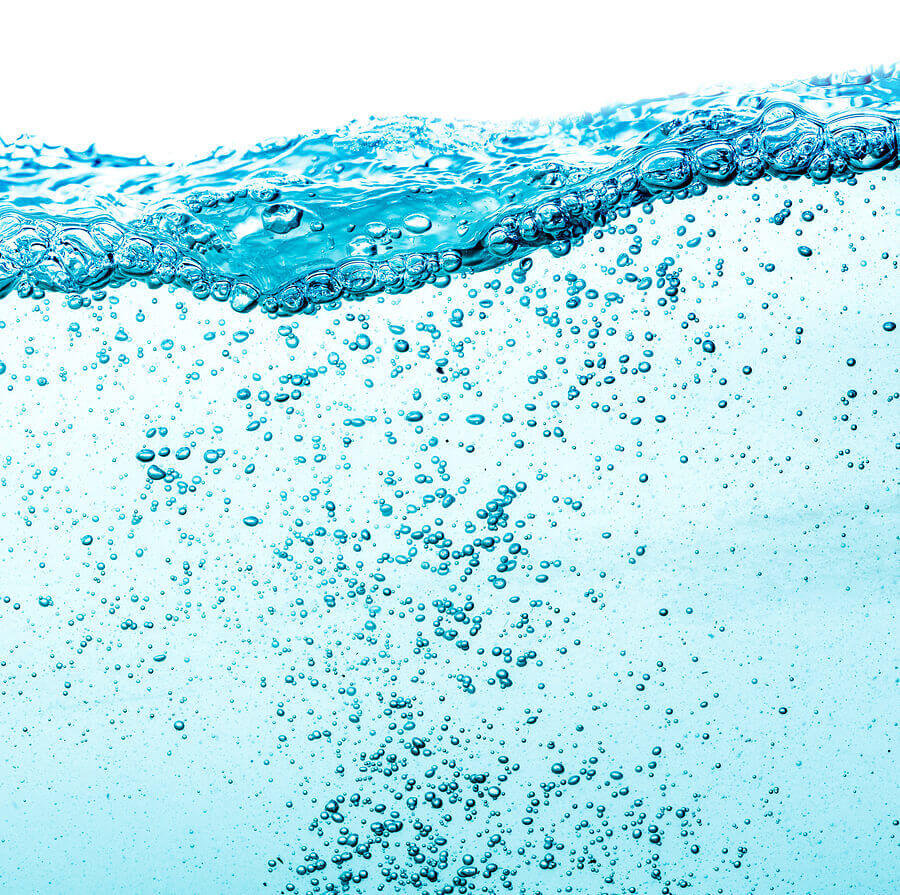
Symptoms of low pH levels
- Goldfish are listless or slow moving
- Pond snails begin to die off
- Slow growth of aquatic plants
- Excess mucus production of goldfish
- Milky skin of goldfish
- Slime coat peals off
- burning of goldfish skin
High pH: Alkaline
High pH levels are caused by- New goldfish ponds can leach lime out of concrete.
- Concrete dust or particles left in new goldfish pond.
- Excessive algae growth that will consume CO2.
- Slow growth of aquatic plants
- White powdery coating on aquatic plants*
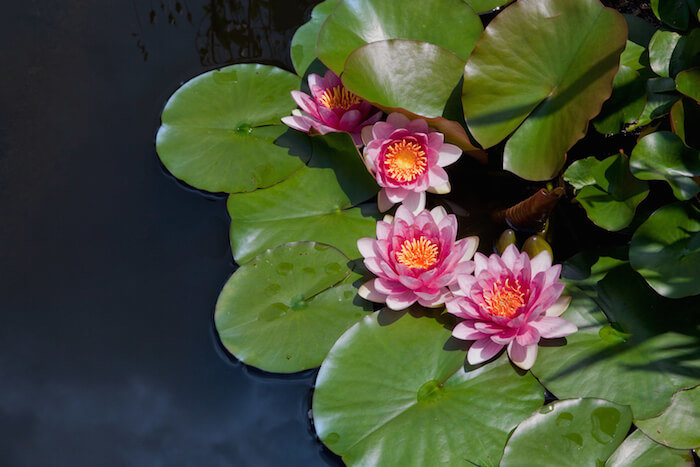
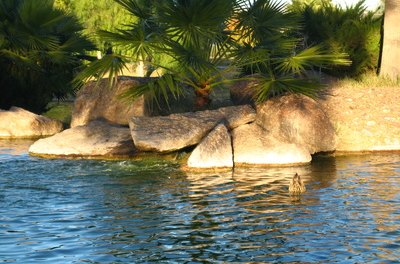
No comments:
Post a Comment